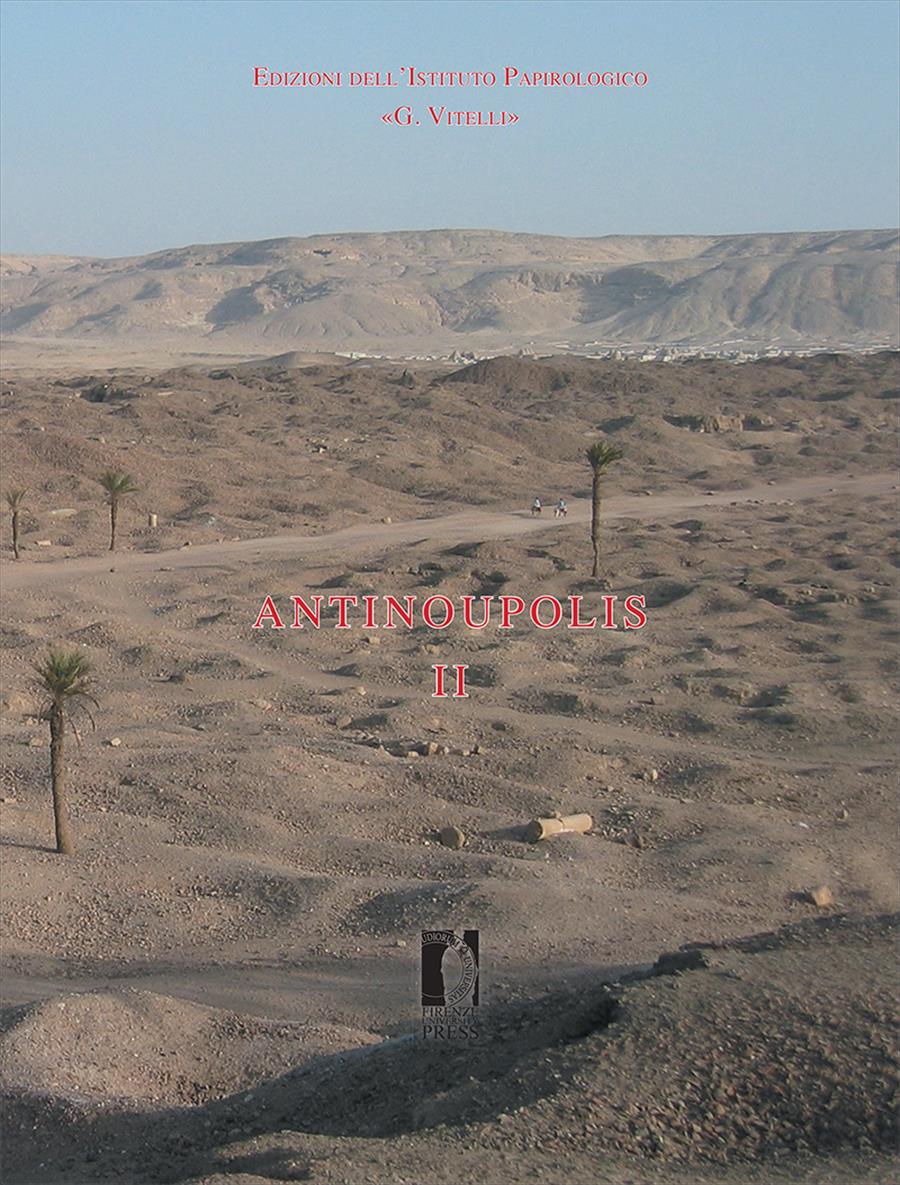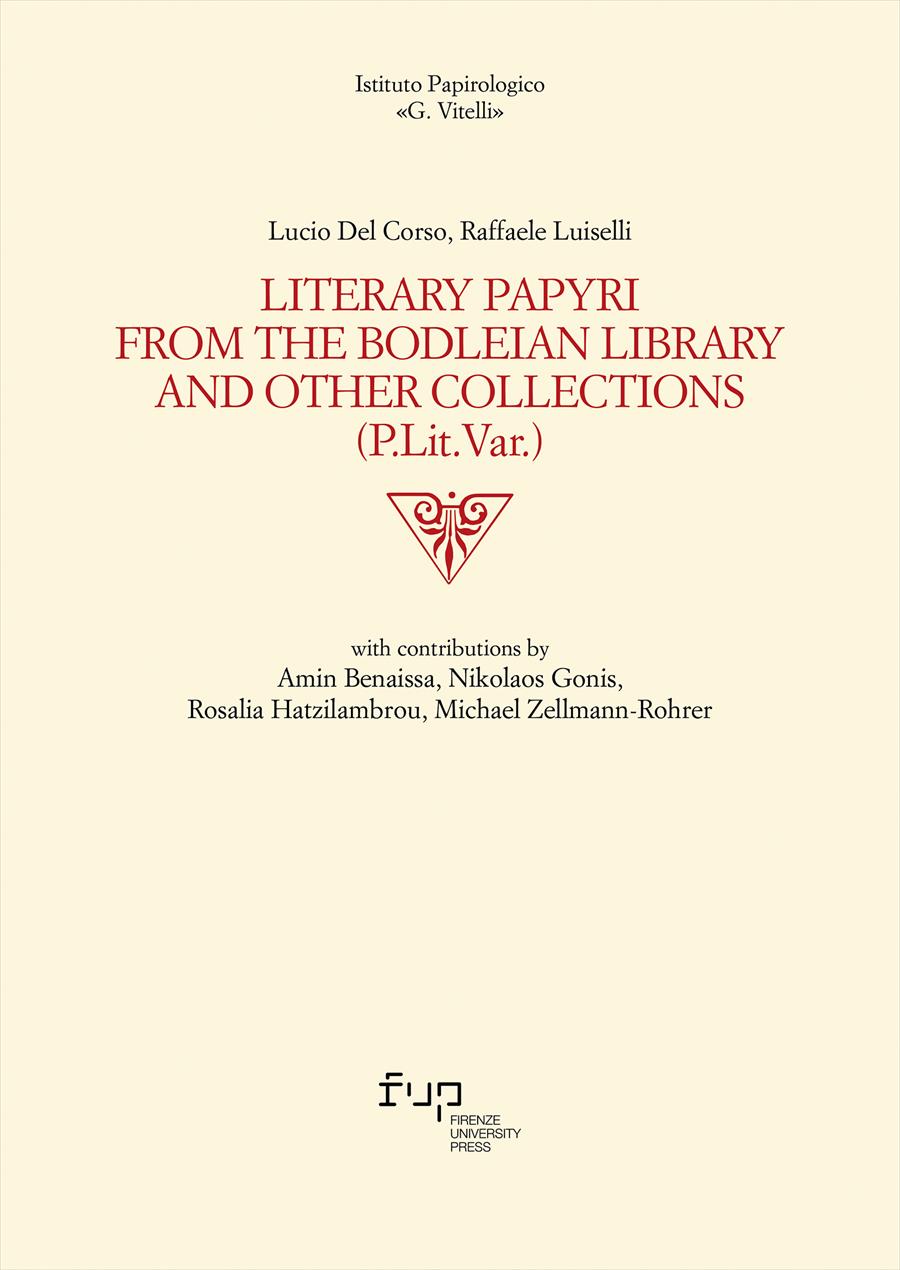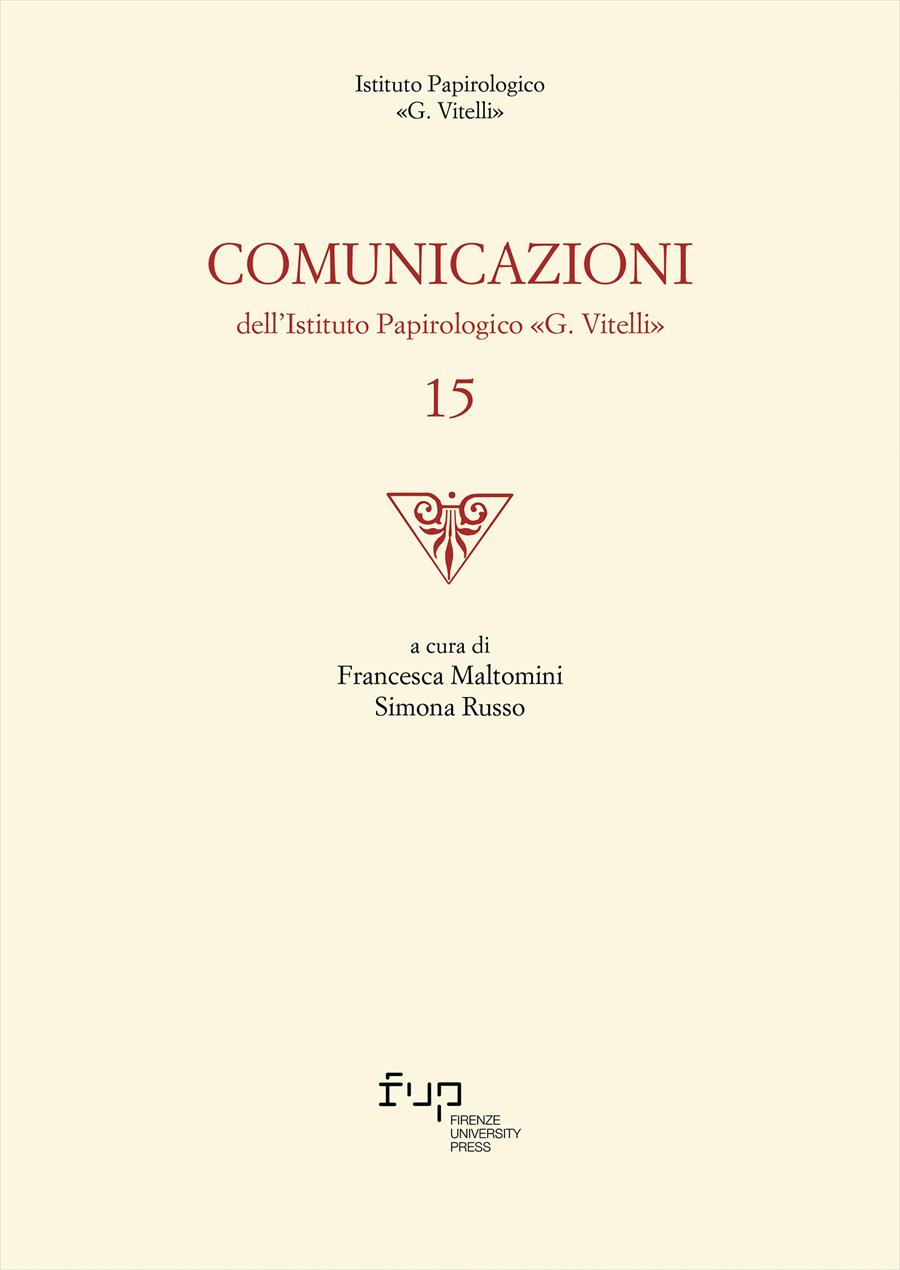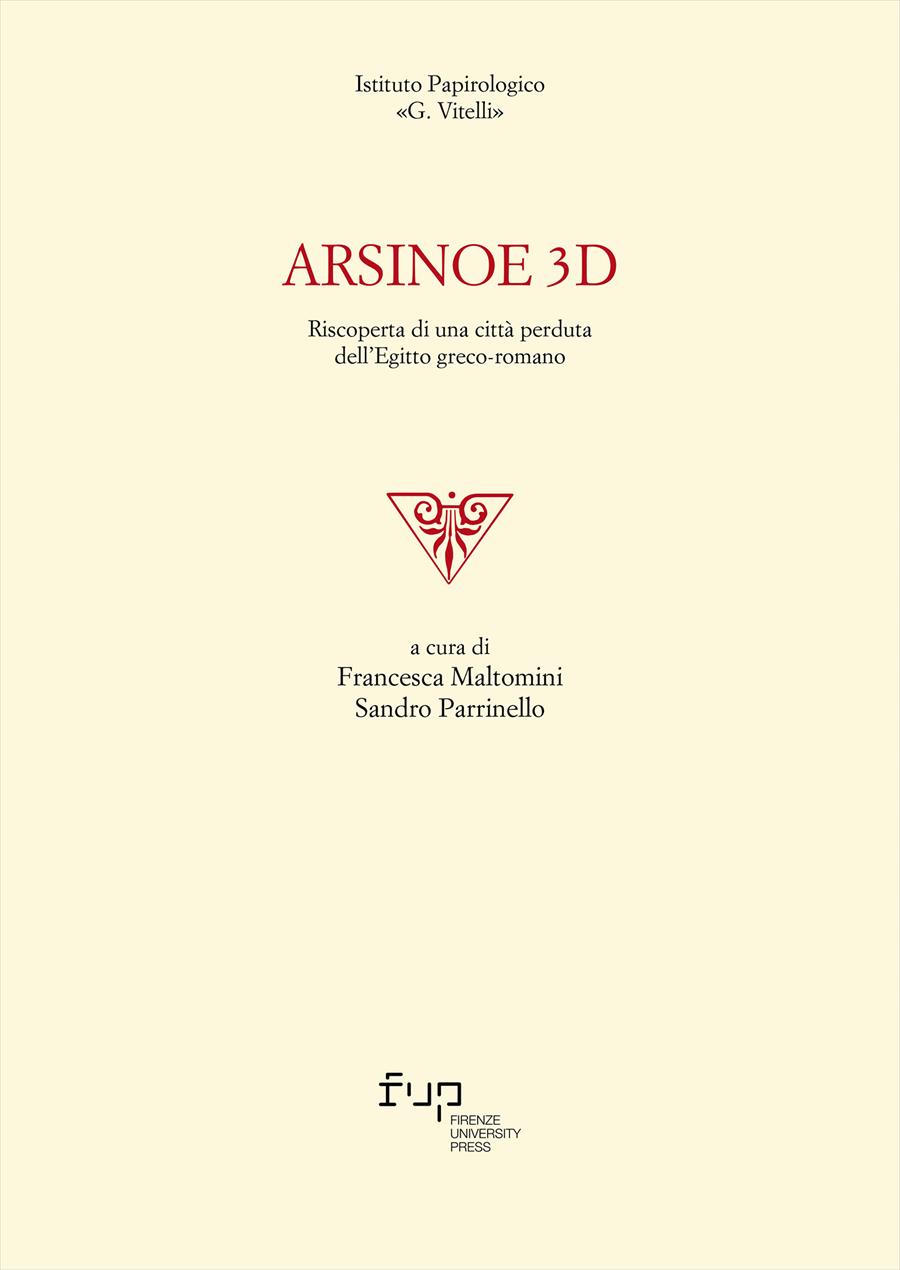Antinoupolis II
- Edited by:
- Rosario Pintaudi,
The archaeological area of Antinoupolis (the city founded by the emperor Hadrian in 130 AD) is one of the largest and most interesting that Egypt has preserved. During the research conducted from 1935 to the present day, the activity of the "G. Vitelli" Papyrological Institute has focused not only on the recovery of written materials (papyrus, parchments, inscriptions), but also on the commitment to ‘archaeologically’ rebuild the ancient city. This volume collects contributions ranging from studies on urban walls, on the temple of Ramesses II, on construction in raw earth, up to geophysical surveys, the identification of domestic and industrial landfills, the Via Nova Hadriana in its connection to the east of the city; there are preliminary notes, plans, but also definitive studies, on the theater, on the area of the martyrium of San Colluto, on the monastery of Deir el-Hawa north of the city, the analysis and catalog of carved building materials – capitals, niches – from the two large basilicas unearthed in recent years in an area never investigated before . The volume ends with the publication of John de Monins Johnson's excavation in Antinoe (1913-1914), illustrated with the photographs of the time and the description of the objects deposited at the British Museum.
- DOI: 10.36253/978-88-6655-666-4
- Series: Edizioni dell’Istituto Papirologico «G. Vitelli»
- Scientific Board
- Language: Italian
- Subjects: Linguistic Papyrology
Purchase
University of Messina, Italy - ORCID: 0000-0003-0537-395X
- Publication Year: 2014
- Pages: 520
- eISBN: 978-88-6655-666-4
- Content License: CC BY-NC-ND 4.0
- © 2014 Author(s)
- Publication Year: 2014
- Pages: 520
- ISBN: 978-88-6655-665-7
- Content License: CC BY-NC-ND 4.0
- © 2014 Author(s)
- Publication Year: 2014
- eISBN: 978-88-9273-396-1
- Content License: CC BY-NC-ND 4.0
- © 2014 Author(s)
Bibliographic Information
Book Title
Antinoupolis II
Editors
Rosario Pintaudi
Peer Reviewed
Number of Pages
520
Publication Year
2014
Copyright Information
© 2014 Author(s)
Content License
Metadata License
Publisher Name
Firenze University Press
DOI
10.36253/978-88-6655-666-4
ISBN Print
978-88-6655-665-7
eISBN (pdf)
978-88-6655-666-4
eISBN (xml)
978-88-9273-396-1
Series Title
Edizioni dell’Istituto Papirologico «G. Vitelli»
Series ISSN
2533-2414
Series E-ISSN
2612-7997






